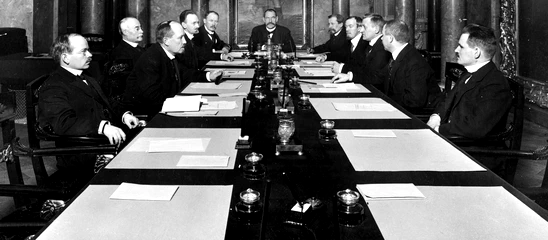
The Limit of Work and the End of Burnout - Part II
- Oscar
- Organizations , Books
- December 30, 2023
In The Limit of Work and the End of Burnout - Part I I told how an innocent request to watch Disney’s “Three Little Pigs” triggered a simple question: “What makes the Practical pig “work all day”? Is it fear of the wolf? Would he have worked as hard had there been no wolf? Would we have?”
To be honest, it was not the cartoon that triggered the question, but watching it after recently finishing reading two books that I found both, interesting and relevant in the context of the challenges of work today: “The End of Burnout”, by Jonathan Malesic, which I covered in that first post , and “It Doesn’t Have to Be Crazy at Work” by Jason Fried and David Heinemeier Hansson, that I intend to cover here.
At the end I hope to get back to the question about the Practical pig, but first, let’s take a look at the second book…
It Doesn’t Have to Be Crazy at Work
Fried and Heinemeier Hansson start their book by affirming that “crazy at work” is the new normal. The primary reasons? Work is sliced into tiny junks (the reality of our jobs in Malesic’s words) and there is an unhealthy ambition that is creating unrealistic expectations (ideals of work), which have pushed people to work more, while not giving them much to show for it other than sustained exhaustion, now turned into a “badge of honor”. “Crazy” sounds a lot like the description of our modem work environments and the conditions leading to burnout we saw in part I.
The modern workplace is sick. Chaos should not be the natural state at work. Anxiety isn’t a prerequisite for progress. Sitting in meetings all day isn’t required for success. These are all perversions of work—side effects of broken models and follow-the-lemming-off-the-cliff worst practices.
Yet, unlike “The End of Burnout”, the book does not spend too much time analyzing the “crazy” state of work and its causes, but based on the authors experience and perspectives1, they present a series of themes and ideas that intend to be practical and that go from attitudes about business and work, to company practices and culture, and that circle around the notion of “calm” as the opposite of “crazy”.
In what follows, I’ll try to connect the almost aphoristic ideas in these themes and link them back to the challenges of “The End of Burnout”.
It’s only work
The second chapter, “Curb Your Ambition”, seems a proper antidote to the “total work” ideal, a way to “place a limit on work”. How else to take ideas like that “[t]he human experience is so much more than 24/7 hustle to the max”, or that “all’s fair in love and war. Except this isn’t love, and it isn’t war. It’s business”? Understanding that work is, well, just work, is the beginning to undress it of its sacrality, of its being the source of dignity and recognition for those who sacrifice themselves on its altar2. Once you treat work as just work, many of the related practices and attitudes, particularly those based on self-sacrifice and justifying means for higher ends, are exposed and become more difficult to live with, they start causing discomfort: “Discomfort is the human response to a questionable or bad situation, whether that’s working long hours with no end in sight, exaggerating your business numbers to impress investors, or selling intimate user data to advertisers.”
Even if not “from the fringes”, the simple act of defining limits to “work” has an empowering effect on people, and although it is not explicitly based on human dignity (the word is not even mention in the whole book) nor offers an alternative account on the bases of what are we limiting work3, it does force the readers to look at their own assumptions on work, either by embracing the limit, or by rejecting it on the bases that that the authors’ experiences are not something every company can or should embrace. Either way, forced to take a position on whether work should be more than just work.
Making work better
Once we accept (if we do of course) that work is just work, we can start thinking about how to make it better. Paradoxically, we can only make work better once we stop sacrificing everything for it. Since it is not about working more, we can focus on how we use the plenty of time we already dedicate to work. When we apply constraints (limits) on work, we start focusing on what really matters: “When you cut out what’s unnecessary, you’re left with what you need. And all you need is 8 hours a day for about 5 days a week.” But the authors would add, well spent hours, uninterrupted and focused hours, if possible in junks of at least 60 minutes: the more extended junks with focus, the better. But this requires changes to how we operate, that we respect each other’s time, and that we stop the “urgency”: it’s just work. That’s why the authors share practical ways in which they have enabled focus: from office hours (like in academia), to make it difficult to create meetings, limit broadcasting of whereabouts and status, or reducing the need and expectation on immediate responses. So what’s it like to ask for help from experts if they have office hours, say on Thursday? “You wait, that’s what you do. You work on something else until Thursday, or you figure it out for yourself before Thursday.” And what if you “need” to get people together in a meeting? “Taking many people’s time should be so cumbersome that most people won’t even bother to try it unless it’s REALLY IMPORTANT!” And what if you “need” something from someone but you don’t know if they are available? “Just ask them! If they respond, then you have what you needed.” Should you even expect a reply?
Don’t expect anything. You’ll get a response when the other person is free and ready to respond.
And if someone doesn’t get back to you quickly, it’s not because they’re ignoring you—it’s probably because they’re working. Don’t you have some other work to do while you wait?
Probably the best idea that reflects this perspective is JOMO: The joy of missing out!
·•·But how do you enable a culture such that the above is possible? You start by recognizing, again, that work is not the totality of life, and that the organization, the business, does not need to be more than that, nor less: understanding the role of leaders in shaping the behaviors that define what is acceptable (in particular if you’re the owner!), embracing the humanity of your colleagues and realizing the need to build meaningful relationships based on trust, and making it a practice to ask, but as important, safe to respond, should be a good start. The rest sounds like what was already said (limit work) and from there, again, things flow in similar reinforcement direction: sleep enough, keep a real work-life balance, set realistic expectations on new hires and help people develop4, pay fairly and provide real benefits, like real paid vacations, and if you need to depart ways with an employee, make it open and transparent.
Culture is also the processes and the tools that a company adopts. In the context of running a SaaS business (software) such as the one the authors do, there are quite a few that could either reinforce or undermine the values exposed earlier. Yet work is about getting things done, and in that sense the “Dissect Your Process” chapter seems to be coherent: how can one get the business going without betraying the promises made to oneself, one’s people and one’s customers? To enable focus, don’t make real-time chat the primary means of communication; realistic deadlines with flexible scopes owned by those making the work help make progress without anxiety; to value people’s time, make sure to consider proposals rather than superficially react to them, but also be mindful of the effects certain actions may have on the rhythm of work, such as a Friday deployment. Other ideas in the same section involve becoming intentional with culture (right from the start, not later), breaking dependencies rather than managing them, and keeping six weeks iterations with a focus on quick prototyping rather than endless exploration, ensuring seeing and idea through, or keeping teams small. But the best ones are, in my opinion, all related to the “negative”: what not to do, what to get rid of, and even doing nothing or “knowing no”.
·•·The second to last chapter, “Mind Your Business”, offers what we would probably call business guidelines. They deal with a variety of subjects, from risk-taking to profitability, to pricing strategy, product road map, launch strategy, market research, legacy support, and even dealing with customer complaints, company size and how the hardest part of a startup is staying-up. Through these, one key theme seems to emerge: be moderate. Or is it “be calm”? Whatever it is, its focus is on creating the business conditions that allow work to remain within limits: don’t risk it so that it does not go crazy; focus on profitability over growth5 to make sure you don’t need to sacrifice your people6; price it so that you don’t end up prisoner of a few accounts that end up driving you crazy; don’t fall prisoner of your product promises, but don’t impose your new ideas on your old customers either pushing them away; don’t waste resources on market research, launch and test the market; it’s about pacing oneself so as to not burn out early.
The book ends with a chapter I wish I could simply reproduce entirely. I won’t… but I will share about half of it.
Are you going to keep pulling people off one incomplete thing to jump onto another incomplete thing? Or are you going to choose to finish what you started before moving on to the next?
Are you going to continue to say “That would never work in our business”? Are you going to continue to say “If the client calls at 11 p.m., I have to answer the phone”? Are you going to continue to say “It’s okay to ask someone to work while they’re on their vacation”? Or are you going to finally choose to make a change?
You have a choice. And if you don’t have the power to make things change at the company level, find your local level. You always have the choice to change yourself and your expectations. Change the way you interact with people. Change the way you communicate. Start protecting your own time.
No matter where you live in an organization, you can start making better choices. Choices that chip away at crazy and get closer to calm.
A calm company is a choice. Make it yours.
Conclusions
One of the key changes on the conditions of work we saw in Malesic’s book was that it had become, over the past several decades, emotionally more demanding and materially less rewarding. The principles, guidelines and examples of work provided above might be out of reach for many (the majority?) existing work environments, and in many cases, they are only applicable to a few types of knowledge worker, mainly designers, software engineers and product specialists, along the few other roles that make up a SaaS business. However, they do offer a concrete idea on what work could look like when “tamed”, when calm. If this was the norm, we’d probably have much less people in the burnout spectrum, not least because it not only limits the time of work, but also its emotional requirements, such as being constantly available or required to have constant interactions with others, while increasing the material rewards.
And yes, we might still need to wait for the machines to take over work fully to “be free to walk our dogs whenever we want. Play tennis at noon every day. Learn to paint. Pray without ceasing. Lie in the grass with the kids and stare up at the sky for hours” (Malesic, p. 230) But while we wait, embracing calm does not sound too bad or too far fetched, at least for those of us already working in the software industry.
·•·I started the first part with a question: “What makes the Practical pig “work all day”? Is it fear of the wolf? Would he have worked as hard had there been no wolf? Would we have?” When thinking about it again, in light of these two books, I can’t help but think that Practical pig works not because there is a wolf, but because work is his identity: he’s the Practical pig! If there was no real wolf, someone would need to fake its existence to let Practical pig find an external reason to his work, or he would probably come up with one of his own anyway.
A more interesting question is ours: Would we have worked all day had there been no wolf? Better yet, why do we? There is no wolf, or is there? And does it need to be? If the wolf represents a perceived threat, it would be fear of the wolf that would make Practical pig work. Although I have just said that this is not what moves him to work, my kids have a different opinion and they insist that that’s why he actually works: but if it is so, why wasn’t it enough to move the other pigs to work?
We just watched The Big Bad Wolf with my kids again. Practical pig’s house was already built, the wolf had moved to the forest, but guess what was Practical pig doing for most of the movie? How would you spend that time? How would I?
Yes, there is always a lot of “perspective” on a book like this, and true, not a lot of references… but even in the case of the best researched cases, data is always based on interpretation, and theory is a way of seeing, from where it derives its current meaning. D. Harper. “Etymology of theory.” Online Etymology Dictionary. https://www.etymonline.com/word/theory (accessed December 30, 2023). If anything, the strength of their arguments lies in their experience, and the fact that they have been able to build a successful company based on these ideas. Malesic provides research and data but may lack practical workable examples in our companies and work environments… while Fried and Heinemeier Hansson provide practical examples from their own experience, but may lack the research and data to further support their claims across. This might be another reason why I believe the two books complement each other well. ↩︎
The religious language is mine, but it’s justified by the authors’ critique of ambition hyperinflation that causes business to claim a higher mission than simply offering a service or product for a profit: “If you stop thinking that you must change the world, you lift a tremendous burden off yourself and the people around you […] So it becomes much harder to justify those 9 p.m. meetings or weekend sprints.” ↩︎
The authors only mention how, for example, limiting sleep makes one literally stupid or that weekends should be off-limit if work already has the work week. ↩︎
“It takes patience to grow and nurture your own talent. But the work it takes—tending to the calm-culture soil—is the same work that improves the company for everyone. Get to it.” ↩︎
That’s so much easier to say now when given the price of money, investor preference for software (SaaS) companies has changed from favoring growth to profitability. ↩︎
“When companies talk about burn rates, two things are burning: money and people.” ↩︎


